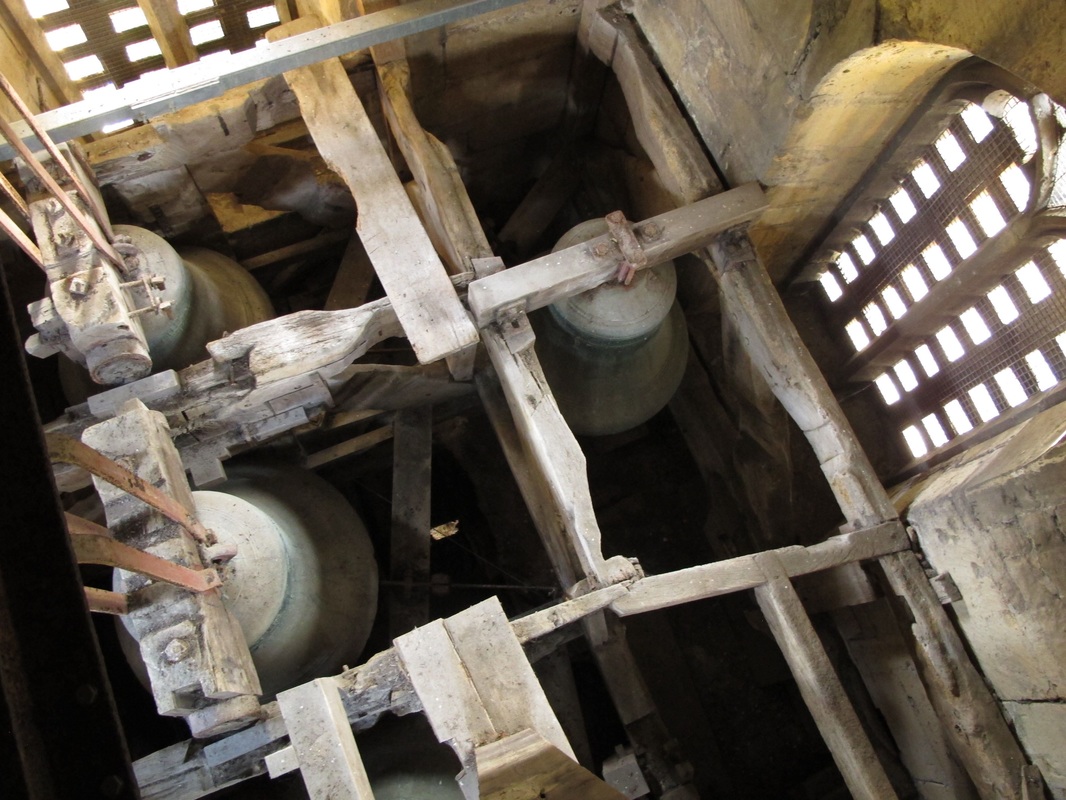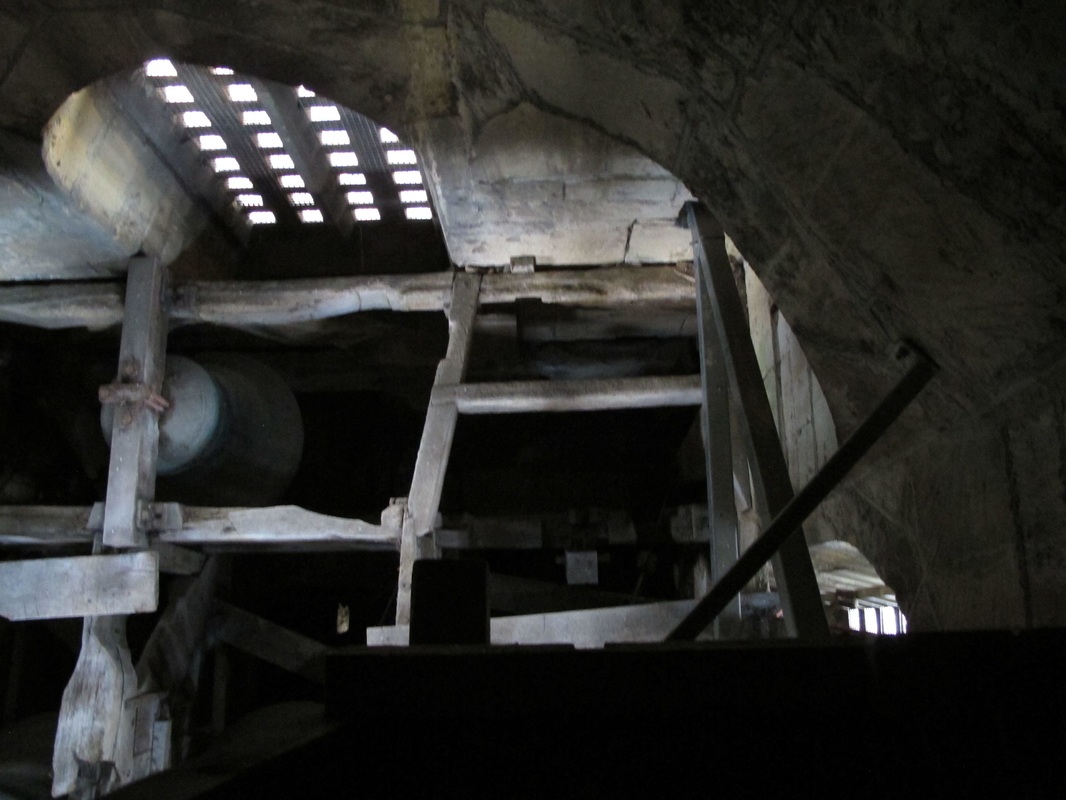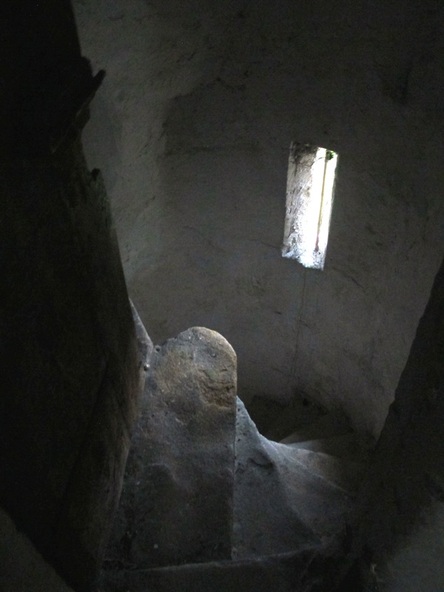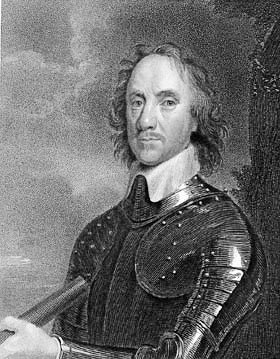Death at St Thomas à Becket Church David Ibberson January 2016 Photos courtesy Carol Payne
It is not unusual for someone to arrive at church having shed their mortal coil but it is unusual for someone to arrive at church outwardly full of life but to depart deceased. Such was the lot of John Thrift who arrived at St Thomas à Becket Church to join the funeral party of the late John Hodgeson. So what were the events leading to John Thrift's demise?
|
Time to Dine
Earlier in the day John Thrift had dined with the vicar, the Rev Walter Bushnell. If witness statements are to be believed, John dined well, drinking a great deal of beer (drinking beer with a meal was the norm because water was often contaminated). Later that day Walter Bushnell conducted John Hodgeson's funeral service. There was no suggestion, on this occasion, that Walter had been drinking excessively although we can assume he drank some beer. After the meal together, John Thrift proceeded to the church to join the funeral party. However, it had not fully assembled and John, it seems, had to find some diversion to pass the time. |
An Eager Campanologist
In due course John Thrift's interest was captured by the bell ringers and in his enthusiasm he attempted to pull one of the bell ropes prompting one witness, William Cottle, to comment that he, John Thrift, could hardly prevent himself from falling into the fold. Another witness, Nicholas Spencer, observed that John walked with an absurd carriage. To put it plainly, William and Nicholas were implying that John Thrift was drunk.
In due course John Thrift's interest was captured by the bell ringers and in his enthusiasm he attempted to pull one of the bell ropes prompting one witness, William Cottle, to comment that he, John Thrift, could hardly prevent himself from falling into the fold. Another witness, Nicholas Spencer, observed that John walked with an absurd carriage. To put it plainly, William and Nicholas were implying that John Thrift was drunk.
|
And So to the Bell Tower
At some point John's interest was diverted to the stone steps leading to the bell tower and for whatever reason he decided to climb the steps into the tower. Allowing for the fact that there would be little or no lighting, this was a climb into the unknown. As it was, for John Thrift, this was a climb into eternity. What happened next is uncertain. However, it was recorded that John was struck by the great bell and in consequence, shed his mortal coil. A visit to the bell tower raises questions. The bells are now fixed in position but 360 degree bearings are still preset and they probably swung full circle at one time. In any event, what are the other possibilities for the cause of John's death in the 1640s ? The most likely cause would be that he fell down the steps and struck his head; or that he was pushed; or that he was ill and simply collapsed; or he was murdered, struck on the head by persons or person unknown. There is one other mystery: who followed John into the tower? Someone did but was unable to help him. Of course, we can’t exclude the possibility that the story is a fabrication. |
Characers in the Drama
We know something about the people who were involved in the story. Rev Walter Bushnell was vicar of Box from 1644 to 1656 and from 1660 to 1666. His story is told separately in this issue. John Thrift was a close relative of Walter, possibly his brother-in-law. It is likely he came from Corsham where Walter was born. A person called John Thrifte was taken to court by Widow Gibbons over a tenancy in the manor of Corsham early in the 1600s.
Nicholas Spencer was a respectable person, a yeoman of Box as recorded in his will. He was almost certainly a smallholder and as such would have had some standing in the community, married with a family including granddaughters. William Cottle was a villager of Box.
We know something about the people who were involved in the story. Rev Walter Bushnell was vicar of Box from 1644 to 1656 and from 1660 to 1666. His story is told separately in this issue. John Thrift was a close relative of Walter, possibly his brother-in-law. It is likely he came from Corsham where Walter was born. A person called John Thrifte was taken to court by Widow Gibbons over a tenancy in the manor of Corsham early in the 1600s.
Nicholas Spencer was a respectable person, a yeoman of Box as recorded in his will. He was almost certainly a smallholder and as such would have had some standing in the community, married with a family including granddaughters. William Cottle was a villager of Box.
|
Thank you Oliver Cromwell
The story of John Thrift would have been lost to history had not Walter been accused of being an ignorant and insufficient minister and called before Cromwell's Committee of Ejectors, reviewing the standard of ministers. The death of John Thrift was used in evidence against Walter that he also drank to excess, albeit, in this case by association. However, Walter was already known to visit the many alehouses in and around Box, deeply disliked by Puritan adherents. William Cottle and Nicholas Spencer, among others, were witnesses at Walter's trial, giving evidence regarding Walter's drinking habits. Walter recorded these facts in a narrative that he wrote after he was judged and deprived of his living in 1656. |
Sources
Much of the foregoing was extracted from Walter's narrative, a copy of which was held by the Rev Selwyn Smith and used in the writing of The Vicars of Thomas à Becket, David Ibberson.
Thanks to Martin Devon for his help with safely accessing the bell tower to take these pictures and for his review and corrections.
Much of the foregoing was extracted from Walter's narrative, a copy of which was held by the Rev Selwyn Smith and used in the writing of The Vicars of Thomas à Becket, David Ibberson.
Thanks to Martin Devon for his help with safely accessing the bell tower to take these pictures and for his review and corrections.



